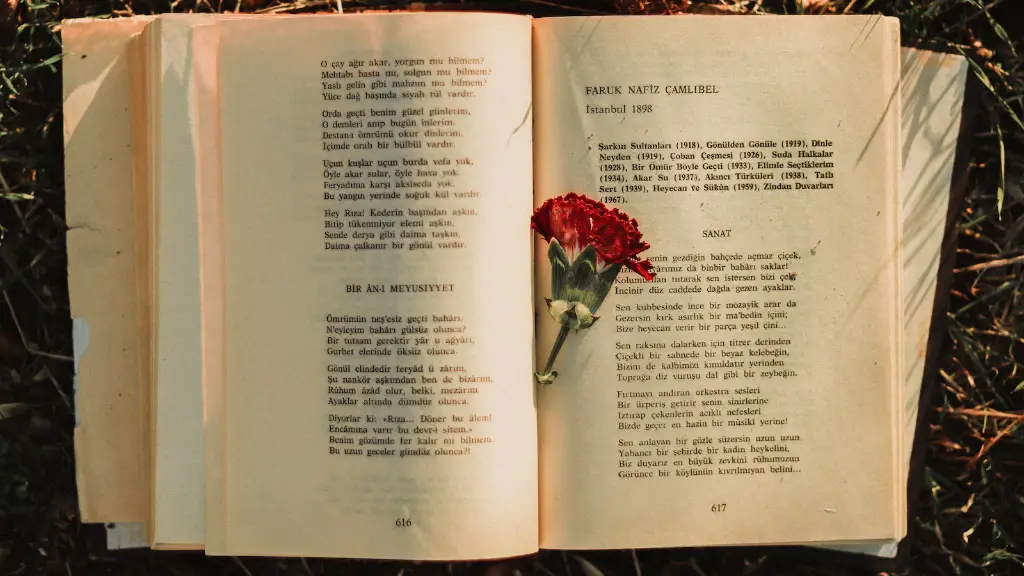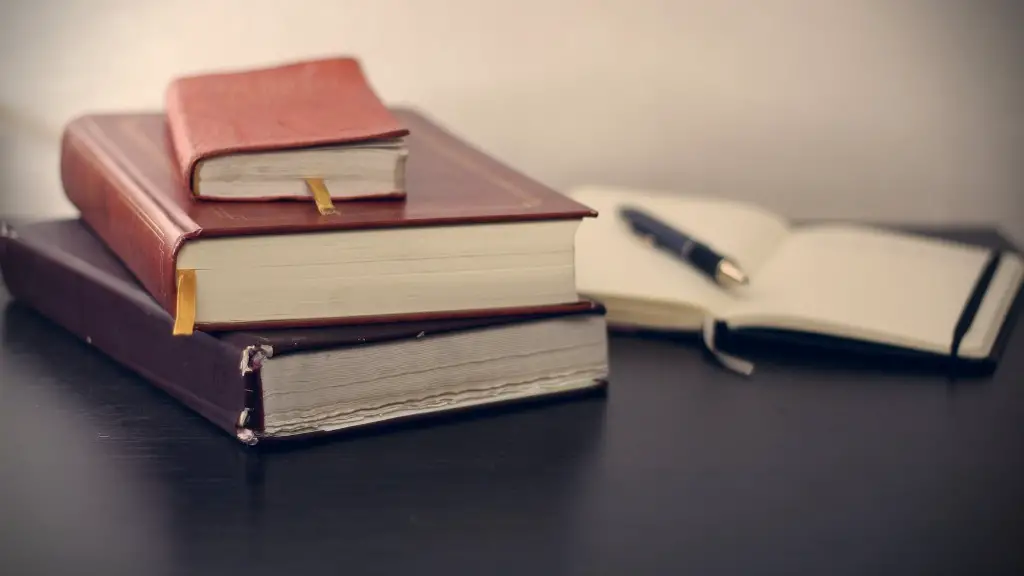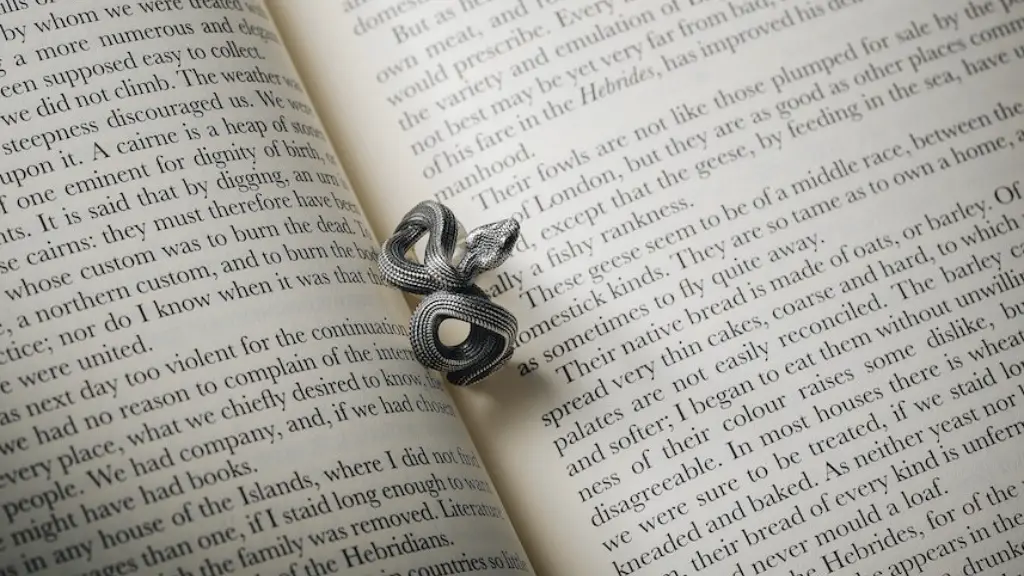In poetry, an ode can be one of the most powerful, emotive forms of written expression. Odes celebrate a person, a place, a thing, or an occasion. They often describe deep emotions, like love or reverence. An ode can be a deep expression of awe and admiration, or a philosophical comment on the beauty of life and the world around us. Odes have been used by many cultures and poets throughout history, from Ancient Greek playwrights to romantic poets like Wordsworth and Keats.
At its simplest, an ode is a poem that praises or honors something. It can express joy and appreciation, or sorrow and reflection. An ode may be presented as a monologue, a conversation, or as a song. The language used in an ode can be powerful and poetic. The poem can be structured in various ways, such as as a set of lines or stanzas, or in a sonnet form. This structure is usually consistent throughout the poem and often follows a specific pattern, like a sequence of thoughts or a story.
The structure of an ode can be simple or complex, depending on the poet’s artistic vision and the purpose of the poem. Generally, an ode will be a reflection on a single subject and the thoughts of the poet. It will often be full of imagery and descriptive language, used to express the feelings of the poet and the object of their admiration. This can be done through metaphors and similes, as well as using specific poetic devices like meter and rhyme.
In some cases, an ode may be used to protest and express the poet’s opinion on something. Odes can also be used to challenge accepted beliefs and push boundaries, expressing and exploring the darker aspects of life. The form provides a unique way to explore the depths of human emotions, as well as their evolution over time.
Odes are often seen as an expression of love and admiration, as they can be a beautiful tribute to something or someone. As powerful form of writing, they can evoke powerful emotions and explore a wide range of human experiences. Odes are also highly personal, allowing the poet to share their thoughts and feelings in an intimate way.
Historical Odes
Odes have been used by many cultures throughout history. Ancient Greek playwrights such as Euripides and Sophocles wrote odes in honor of gods and heroes. Odes were also used by Ancient Romans and Egyptians as a way to praise the gods and commemorate special occasions. Odes also featured in classical Chinese and Japanese poetry and in Renaissance poetry.
In the eighteenth century, the form of the ode evolved, as poets like Alexander Pope popularized the use of heroic couplets. Romantic poets such as Lord Byron and William Wordsworth also embraced the ode, using it to explore nature and the human condition. More recently, poets like Ezra Pound and T.S. Eliot have used odes to explore modernist themes and ideas.
Modern odes are still used to praise individuals and special occasions. They can also be used to express a wide range of emotions, and explore the boundaries between the spiritual and physical worlds. As a form of writing, odes provide poets with a highly expressive and personal way to share their thoughts and feelings.
Evolution of the Ode
The form of the ode has evolved over the centuries, with different poets introducing their own variations and interpretations. Most odes have a distinct structure, usually comprised of a series of stanzas and a specific rhyme scheme. The number of stanzas and the length of the poem may vary, and the language used can range from simple and straightforward to more sophisticated and poetic.
As the form has evolved, so too has the purpose of an ode. Modern poets may use the form to celebrate a person, a place, or an event, but they may also use it to explore deeper philosophical ideas. By using the unique structure of an ode, poets can express their thoughts and feelings in a more powerful and emotive way.
In more recent years, there has been a resurgence in the popularity of odes. Modern poets are finding new and inventive ways to use the form, and are pushing the boundaries of what an ode can be. As odes remain one of the most emotive forms of written expression, they remain as powerful and relevant as ever.
Literary Devices Used in Odes
Odes make use of many different literary devices. In some cases, they will make use of traditional poetic devices such as similes and metaphors. They may also use personification, a device used to give human qualities to inanimate objects. Odes can also feature alliteration and assonance, which can be used to create a stronger rhythm and emphasise certain words. Rhyme is also a popular device used in odes, and can be used effectively to create a strong, cohesive poem. Lastly, odes may feature a refrain, which can be used to give the ode a sense of structure.
By making use of these devices, poets can create a powerful and emotive poem that expresses their thoughts and feelings. The use of these devices can also help to create a sense of rhythm and cohesion within the poem. This can help to engage the reader and create a more engaging and powerful poem.
Benefits of Writing an Ode
Writing an ode can be a unique and rewarding experience. By focusing on a single subject, poets can explore and express deep emotions, from love and admiration to sorrow and reflection. It can also be a great way to challenge accepted beliefs and express differing perspectives. By using the structure of an ode, poets can create a beautiful and powerful poem that expresses their thoughts and feelings in an intimate and emotive way.
Writing an ode can also serve as a form of self-expression, allowing poets to share their thoughts and feelings in a passionate and poetic way. Odes also give poets a platform to explore deeper philosophical ideas and express their opinion on a wide range of topics. Lastly, they can also provide poets with an opportunity to explore the boundaries between the spiritual and physical worlds.
Conclusion
Odes have been used by many cultures and poets throughout history. The form provides a unique and powerful way to express emotions, from love and admiration to sorrow and reflection. Odes make use of various literary devices, such as similes and metaphors, to create a strong and emotive poem that engages the reader. Writing an ode can be a great way to explore deeper philosophical ideas and challenge accepted beliefs. By exploring these concepts in a poetic and emotive way, poets can create a powerful and beautiful poem that expresses their thoughts and feelings.




